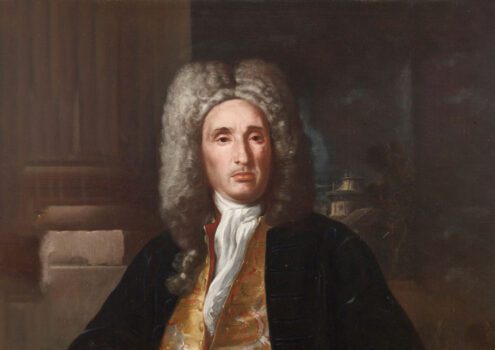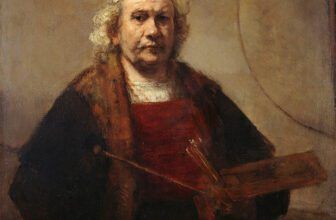Francesco Solimena’s Most Famous Paintings
In the rich tapestry of Baroque art, a few names stand out for their storytelling and compositions. Among them is Francesco Solimena (1657–1747), one of the most influential Italian painters of the late Baroque period. Known for his immense productivity, sophisticated compositions, and impact on Neapolitan painting, Solimena’s legacy stretches across Europe, influencing generations of artists and captivating art lovers to this day.
This is the story of Francesco Solimena: his rise to artistic fame, his most celebrated works, and the ongoing legacy of a master whose paintings breathe divine drama into the canvas.
Francesco Solimena: A Life in Paint and Prestige
Francesco Solimena was born in Canale di Serino, a small town near Avellino in Southern Italy, in 1657. He was the son of Angelo Solimena, a painter of modest renown. Trained initially by his father, Francesco’s early works reflect a strong familial influence, though his style would soon develop into something far more dynamic and monumental.
In the 1680s, Francesco moved to Naples, then a major artistic center under Spanish rule. It was here that his career began to flourish. Naples was experiencing a Baroque revival led by painters such as Luca Giordano, whose swift brushwork and theatrical compositions would leave a lasting impression on the young Solimena.
By the 1690s, Francesco Solimena had established his own workshop and had begun to attract commissions from churches, monasteries, and wealthy patrons. His reputation quickly spread beyond Naples. He became known not just as a brilliant painter but also as a scholar, architect, and theorist, qualities that made him one of the most respected figures in the European art world.
His clients included the Spanish viceroys of Naples, the Austrian Habsburgs, and Pope Benedict XIII, solidifying Solimena’s role as a court artist of international stature. At a time when Italy’s influence on art was beginning to wane in the face of rising French and Dutch schools, Solimena helped to sustain and reenergize the Baroque tradition.
What Is Francesco Solimena Known For?
Francesco Solimena is best known for his grandiose religious and mythological paintings, rendered in dramatic lighting and bold compositions. His work combined the dynamism of the Roman Baroque, exemplified by Caravaggio and Pietro da Cortona, with the colorism and grace of Venetian masters like Titian and Veronese.
Solimena was a master of chiaroscuro, a technique that uses the contrast of light and dark to create depth and emotion. His paintings often depict sacred or historical events, staged like operatic scenes, filled with movement, expression, and celestial vision.
He is also known for establishing one of the most important art workshops in Naples. He trained numerous pupils, including Francesco de Mura, Corrado Giaquinto, and Sebastiano Conca, all of whom carried his influence into the 18th century.
Francesco Solimena’s Most Famous Paintings
Francesco Solimena was a prolific artist, and while the exact number of his works is uncertain, it’s estimated he created over 500 paintings throughout his long life. Among his many masterpieces, a few stand out as particularly iconic:
1. The Expulsion of Heliodorus from the Temple (1725–30)
Housed in the Palace of Caserta, this dramatic fresco depicts a scene from the Book of Maccabees. The high priest Onias prays as divine horsemen drive Heliodorus from the temple for attempting to steal sacred treasure. Solimena’s use of movement and lighting in this piece is exemplary of his theatrical style.
2. The Institution of the Rosary (1712)
This large altarpiece, located in San Domenico Maggiore in Naples, shows the Virgin Mary bestowing the rosary upon Saint Dominic and Saint Catherine. The scene is vibrant, filled with spiritual ecstasy and rich detailing, hallmarks of Solimena’s mature work.
3. The Apotheosis of Saint Catherine (1708)
A ceiling fresco from the Monastery of San Paolo in Naples, this work elevates the saint into heaven amidst a host of angels. It showcases Solimena’s architectural knowledge, as the painting’s composition plays with perspective and trompe-l’œil to stunning effect.
4. Judith and Holofernes (c. 1704–05)
This biblical scene, of Judith decapitating the Assyrian general Holofernes, is a masterclass in tension, shadow, and expression. It resides today in the Museum of Fine Arts in Budapest.
5. The Triumph of Faith over Heresy (1709)
Commissioned by Pope Clement XI, this painting once adorned the Jesuit Church in Naples. It is a complex allegorical work that glorifies the Church’s victory over heresy, depicted through triumphant figures and celestial glory.
What Is the Most Expensive Painting by Francesco Solimena?
The art market for Francesco Solimena has remained strong, especially for well-preserved works with religious or mythological themes. The most expensive known sale was for the painting:
“The Allegory of the Four Parts of the World”
This monumental canvas, attributed to Solimena and his workshop, sold at auction for over $1 million USD. The painting represents Europe, Asia, Africa, and the Americas as allegorical female figures, surrounded by animals and symbols of empire. The complexity of the iconography, combined with the large scale and fine condition, drove the painting’s price to record levels.
Though not all of Solimena’s works reach this financial height, high-quality canvases and fresco fragments consistently sell in the hundreds of thousands of dollars in major art markets like London and New York.
How Many Paintings Does Francesco Solimena Have?
While no definitive catalogue raisonné (a comprehensive list of artworks by an artist) exists for Francesco Solimena, estimates suggest he created:
Between 500 to 700 paintings,
Alongside numerous frescoes and preparatory sketches,
Many of which are still in situ (in their original locations in churches and palaces).
Due to his long life (he lived to be 90 years old), and the size of his workshop, Solimena maintained a high level of production, often collaborating with pupils and assistants. This makes attribution a bit complex, as some pieces are co-authored or studio productions. However, his hallmark style, graceful figures, glowing color, and luminous depth, makes his hand easy to recognize in many works.
Where Are Francesco Solimena’s Paintings Located?
Solimena’s artworks are scattered across Europe and the United States, with major collections in:
Italy
Naples: Museo di Capodimonte, San Domenico Maggiore, Church of Gesù Nuovo
Rome: Vatican Museums, Galleria Nazionale d’Arte Antica
Palace of Caserta: Ceiling frescoes and large-scale religious paintings
Austria
Vienna: Kunsthistorisches Museum, home to several mythological and allegorical works
France
Louvre Museum: Solimena is represented in the French national collection, though not always on permanent display
United States
Metropolitan Museum of Art, New York
Getty Museum, Los Angeles
Museum of Fine Arts, Boston
Germany
Alte Pinakothek, Munich
Gemäldegalerie, Berlin
Many of his frescoes remain in Neapolitan churches and monasteries, where their full grandeur can still be experienced as originally intended, soaring above in sacred spaces, where art and architecture merge in spiritual drama.
Francesco Solimena’s Legacy
Solimena’s impact on the Baroque cannot be overstated. He not only helped preserve the emotional and religious grandeur of the Italian Baroque, but also adapted it to Enlightenment tastes, creating a bridge between the Baroque and the Rococo.
His legacy includes:
Training a generation of successful artists, especially in Naples.
Innovating religious iconography, giving sacred subjects a narrative complexity and psychological depth.
Influencing court art across Europe, particularly in Austria, Spain, and France.
Pioneering ceiling frescoes that rival those of Cortona or Tiepolo in scale and illusion.
Solimena’s work reflects the changing political and religious tides of his time. His paintings often carry subtle allegorical messages about power, virtue, and divine providence. He was also deeply intellectual, an avid reader, musician, and poet, which lent his work a richness that went beyond mere decoration.
Despite his success, Solimena remained deeply connected to Naples. He refused offers to serve as court painter in Vienna or Madrid, choosing instead to shape the cultural life of his home city. Today, Neapolitans still speak of him with reverence, and his name adorns streets and schools in southern Italy.
Francesco Solimena lived a long and prolific life, his career spanning the tail end of the Baroque and the rise of Rococo. Through his countless canvases and frescoes, he infused mythological, historical, and religious narratives with new life. His paintings pulse with drama, motion, and divine illumination, a style that captivated popes, emperors, and everyday worshipers alike.
From the vaulted ceilings of Naples to the galleries of Vienna and New York, Solimena’s works continue to command admiration. Whether seen as a conservative torchbearer of the Baroque or a subtle innovator pushing toward modernity, Solimena remains an essential figure in the history of Western art.
To stand beneath one of his frescoes is to witness a moment of eternal glory captured in pigment. To study his canvases is to feel the pulse of an era that believed in the power of beauty to uplift the soul.
Francesco Solimena was not just a painter of saints and angels, he was a visual dramatist, a storyteller in color and light, whose legacy endures in every brushstroke.




